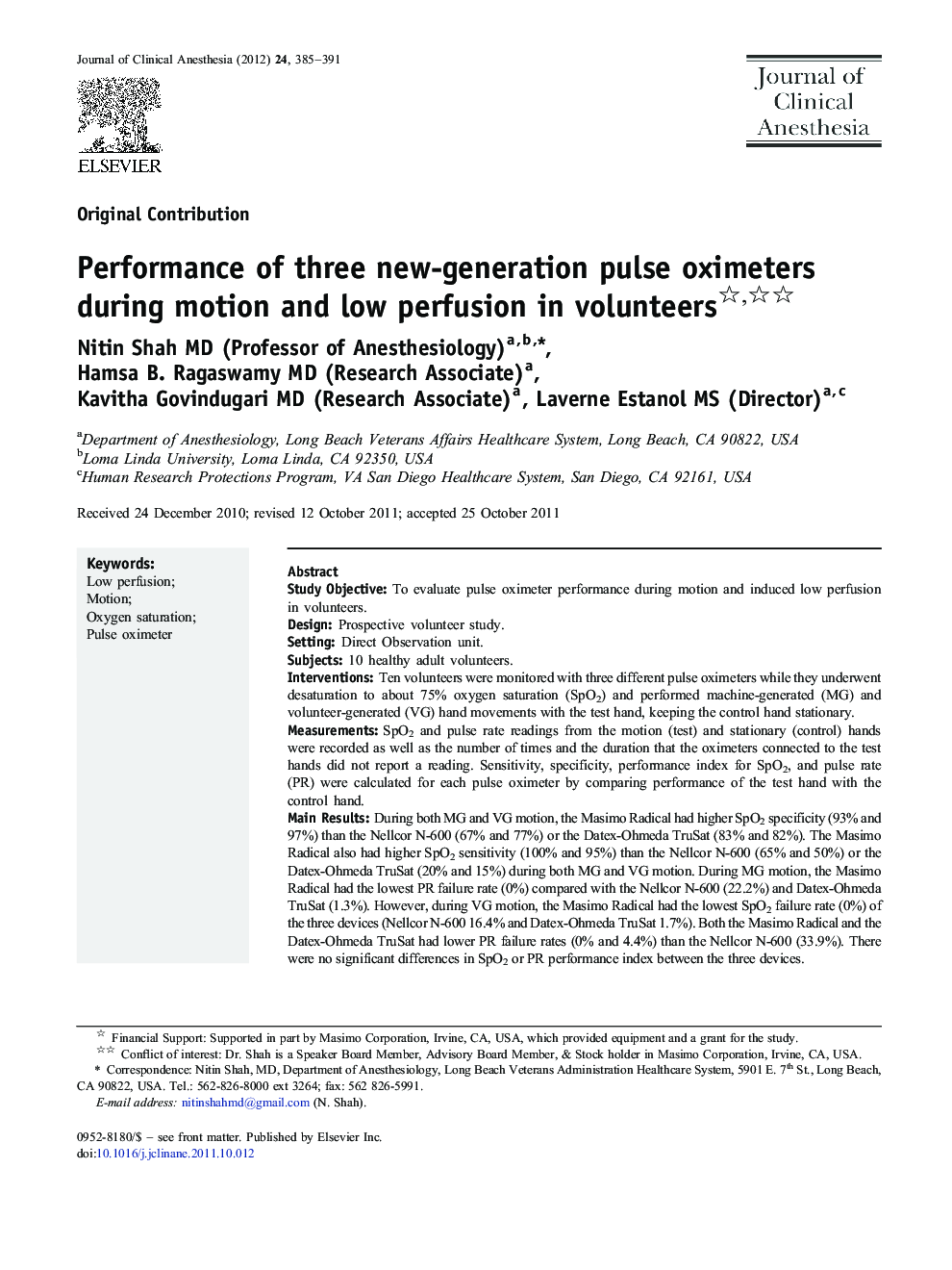| Article ID | Journal | Published Year | Pages | File Type |
|---|---|---|---|---|
| 2763118 | Journal of Clinical Anesthesia | 2012 | 7 Pages |
Study ObjectiveTo evaluate pulse oximeter performance during motion and induced low perfusion in volunteers.DesignProspective volunteer study.SettingDirect Observation unit.Subjects10 healthy adult volunteers.InterventionsTen volunteers were monitored with three different pulse oximeters while they underwent desaturation to about 75% oxygen saturation (SpO2) and performed machine-generated (MG) and volunteer-generated (VG) hand movements with the test hand, keeping the control hand stationary.MeasurementsSpO2 and pulse rate readings from the motion (test) and stationary (control) hands were recorded as well as the number of times and the duration that the oximeters connected to the test hands did not report a reading. Sensitivity, specificity, performance index for SpO2, and pulse rate (PR) were calculated for each pulse oximeter by comparing performance of the test hand with the control hand.Main ResultsDuring both MG and VG motion, the Masimo Radical had higher SpO2 specificity (93% and 97%) than the Nellcor N-600 (67% and 77%) or the Datex-Ohmeda TruSat (83% and 82%). The Masimo Radical also had higher SpO2 sensitivity (100% and 95%) than the Nellcor N-600 (65% and 50%) or the Datex-Ohmeda TruSat (20% and 15%) during both MG and VG motion. During MG motion, the Masimo Radical had the lowest PR failure rate (0%) compared with the Nellcor N-600 (22.2%) and Datex-Ohmeda TruSat (1.3%). However, during VG motion, the Masimo Radical had the lowest SpO2 failure rate (0%) of the three devices (Nellcor N-600 16.4% and Datex-Ohmeda TruSat 1.7%). Both the Masimo Radical and the Datex-Ohmeda TruSat had lower PR failure rates (0% and 4.4%) than the Nellcor N-600 (33.9%). There were no significant differences in SpO2 or PR performance index between the three devices.ConclusionsThe Masimo Radical had higher SpO2 sensitivity and specificity than the Nellcor N-600 and Datex-Ohmeda TruSat during conditions of motion and induced low perfusion in this volunteer study.
